The Kurai steppe is a typical Alpine-steppe which lies at an altitude of 1500 – 1600 meters above sea level. The steppe area is about 17.8 hectares, its length is up to 20 km and the widest place is about 15 kilometers. In the northeast, the steppe is bounded by the Kurai ridge which is about 2800-3200 meters high. In the southwest you will see the North-Chuya Ridge, one of the highest ranges in the Altai Mountains with peaks of about 4000 meters. The fact that the steppe is surrounded by the high ridges makes the steppe scenery very impressive.
The steppe stretches from the southeast to the northwest , where it is almost blocked by spurs of the ranges. The bottom of the basin is an almost smooth plain; in some places with hummocky swamps and solonetzes. One of the biggest rivers of Altai – the Chuya River – flows in its lowest part.
The climate in the region is rather severe, the summer is short and the frost-free period is only 55-65 days a year. Even in the summer months, a rather sharp contrast between day and night temperatures can be observed. In the mountains surrounding the steppe, snow sometimes falls already in the second half of August and lasts until the end of May.
There is little rainfall during the year, which significantly affects the local flora. Besides frequent droughts, local soils are mostly consist of stones, have strong water permeability and salinity. Due to it, in some places the steppe resembles a desert with all its characteristic plants – caragana, saxifrag, various kinds of wormwood. Juniper is also found here, but harsh weather conditions make it literally creep along the ground to protect itself from strong winds and frosts. Richer vegetation is found along river beds, especially the Chuya river – larches, laurel poplars, weeping willows, Kuril tea, mountain forget-me-nots and even mushrooms grow there.
The fauna of the steppe is very diverse. Gophers, field mice, pika’s, steppe ferrets and hares live in the steppe, and you can find the steppe fox or corsac and even the wolf. Demoiselle cranes and (black) storks settle along the banks of the rivers.
Despite the harsh climatic conditions, the Kurai steppe has been home to many people for many centuries. Even now, you can find here archaeological sites of different cultures – mounds, ancient irrigation systems, balbals and groups of rock carvings. Until 1972, a symbol of Turkic culture – a stone sculpture of the warrior “keser”, 1.6 meters high, was standing in the steppe. In 1972, it was transferred to the Museum of Local Lore of Gorno-Altaysk, where it can be seen today. In 2019 the copy of this monument was erected in the Kurai steppe.
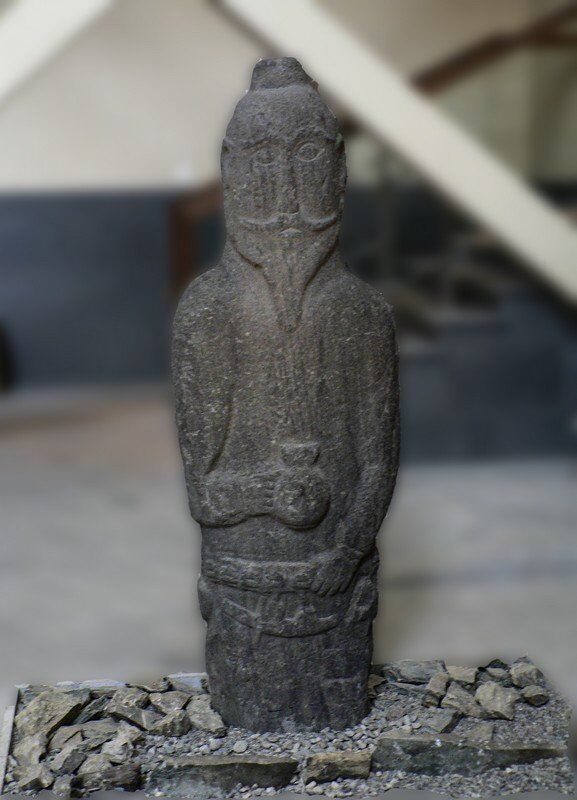
For centuries people lived in the Kurai steppe in a nomadic way. The first settlement belongs to the 19th century, when the Administration of the 2nd Chuya volost was established. It consisted of one yurt and a house in which a coachman and a clerk lived. It was supposed to make a village for peasants from the European part of Russia here, but due to the lack of a road, this idea was not successful for quite some time. In 1903 the Russian Orthodox church which had come as missionary, built a church in this area. The population of the steppe continued to lead a nomadic way of life and did not tend to settle down.
Only after installation of Soviet power, in 1926 the construction of a small village started. Later the school, the post-office and the hospital were opened. The village began to grow, and in 1930 a cattle-breeding kolkhoz was established. Young Soviet power had very ambitious ideas to turn the dry steppe to green fields. A complicated irrigation system was built in the steppe. In 1930-1940-s a lot of experiments to grow wheat, oats, barley and vegetables were set up. Some of them were successful and harvests of grains were collected. But nature conditions were too severe and since 1950-s crop farming turned only to growing coarse grain for feeding cattle. Breeding of sheep, goats and cows became the main activity of the kolkhoz.
Besides agriculture, there was a basecamp of geological exploration expeditions in Kurai . Geologists were researching surrounding mountains looking for mineral deposits. Although they found a lot of different minerals, it turned out that the costs to get them would be too high.
Today, two villages are located in the Kurai steppe – Kurai and Kyzyl-Tash.
In the Kurai steppe, you can see a unique geological formation – one of the most spectacular relief fields of giant current ripples in the world. These are the same ripples that you can see on the sand banks of rivers or seas, only much bigger. In the Kurai steppe the height of the sand dunes in some places reaches 20 meters with a length of 200 meters. These huge ripples were formed, according to scientists, about 15 thousand years ago during the catastrophic breakthrough of the Chuya-Kurai ice-dammed lakes. According to the official register of the American Geology Service, water flows which formed the dunes in Kurai were the strongest in the world, the peak discharge of water was about 18 million cubic meters per second. The best view to the giant current ripples is from the air. But it is possible to observe them from some hills in the steppe.
The main attraction of the Kurai steppe is, of course, a stunning view of the North Chuya Range. The mountains come as close to the road as possible and in fine weather, high snow-covered peaks and mighty glaciers are perfectly visible.
A lot of active touristic and alpinists’ routes start from the Kurai steppe. You can even get close to the glaciers in the Aktru valley by 4WD car.
The Kurai steppe is a typical Alpine-steppe which lies at an altitude of 1500 – 1600 meters above sea level. The steppe area is about 17.8 hectares, its length is up to 20 km and the widest place is about 15 kilometers. In the northeast, the steppe is bounded by the Kurai ridge which is about 2800-3200 meters high. In the southwest you will see the North-Chuya Ridge, one of the highest ranges in the Altai Mountains with peaks of about 4000 meters. The fact that the steppe is surrounded by the high ridges makes the steppe scenery very impressive.
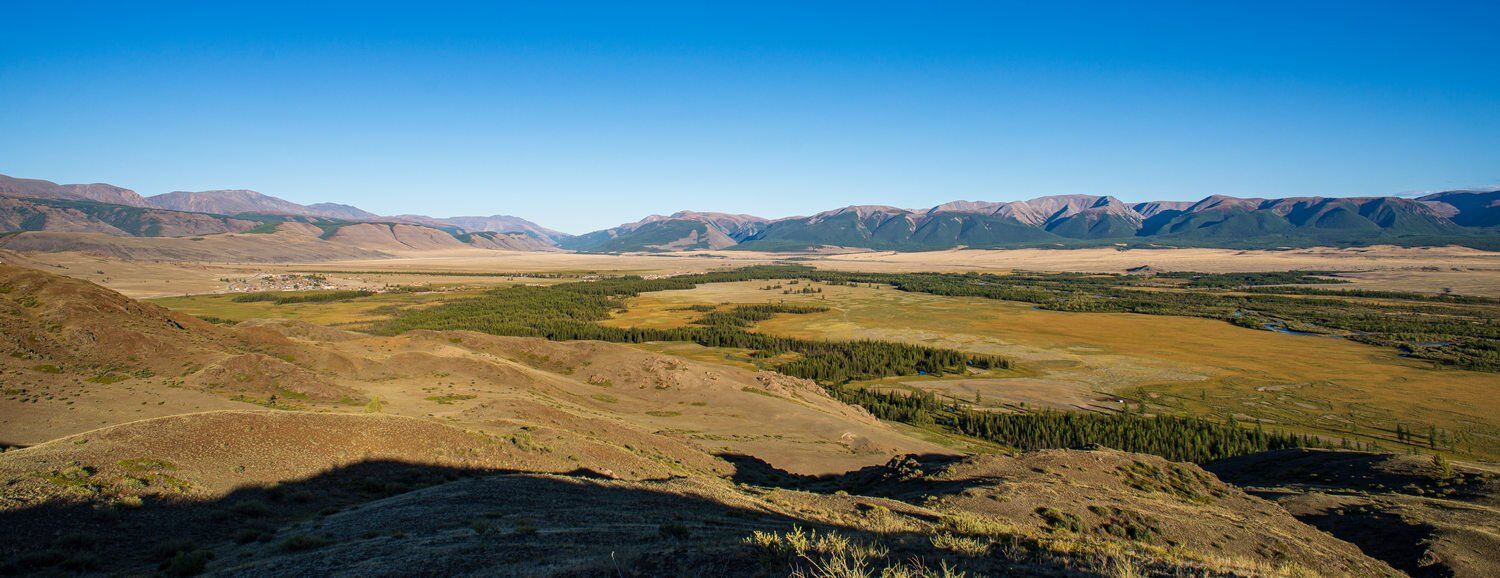
The steppe stretches from the southeast to the northwest , where it is almost blocked by spurs of the ranges. The bottom of the basin is an almost smooth plain; in some places with hummocky swamps and solonetzes. One of the biggest rivers of Altai – the Chuya River – flows in its lowest part.
The climate in the region is rather severe, the summer is short and the frost-free period is only 55-65 days a year. Even in the summer months, a rather sharp contrast between day and night temperatures can be observed. In the mountains surrounding the steppe, snow sometimes falls already in the second half of August and lasts until the end of May.
There is little rainfall during the year, which significantly affects the local flora. Besides frequent droughts, local soils are mostly consist of stones, have strong water permeability and salinity. Due to it, in some places the steppe resembles a desert with all its characteristic plants – caragana, saxifrag, various kinds of wormwood. Juniper is also found here, but harsh weather conditions make it literally creep along the ground to protect itself from strong winds and frosts. Richer vegetation is found along river beds, especially the Chuya river – larches, laurel poplars, weeping willows, Kuril tea, mountain forget-me-nots and even mushrooms grow there.
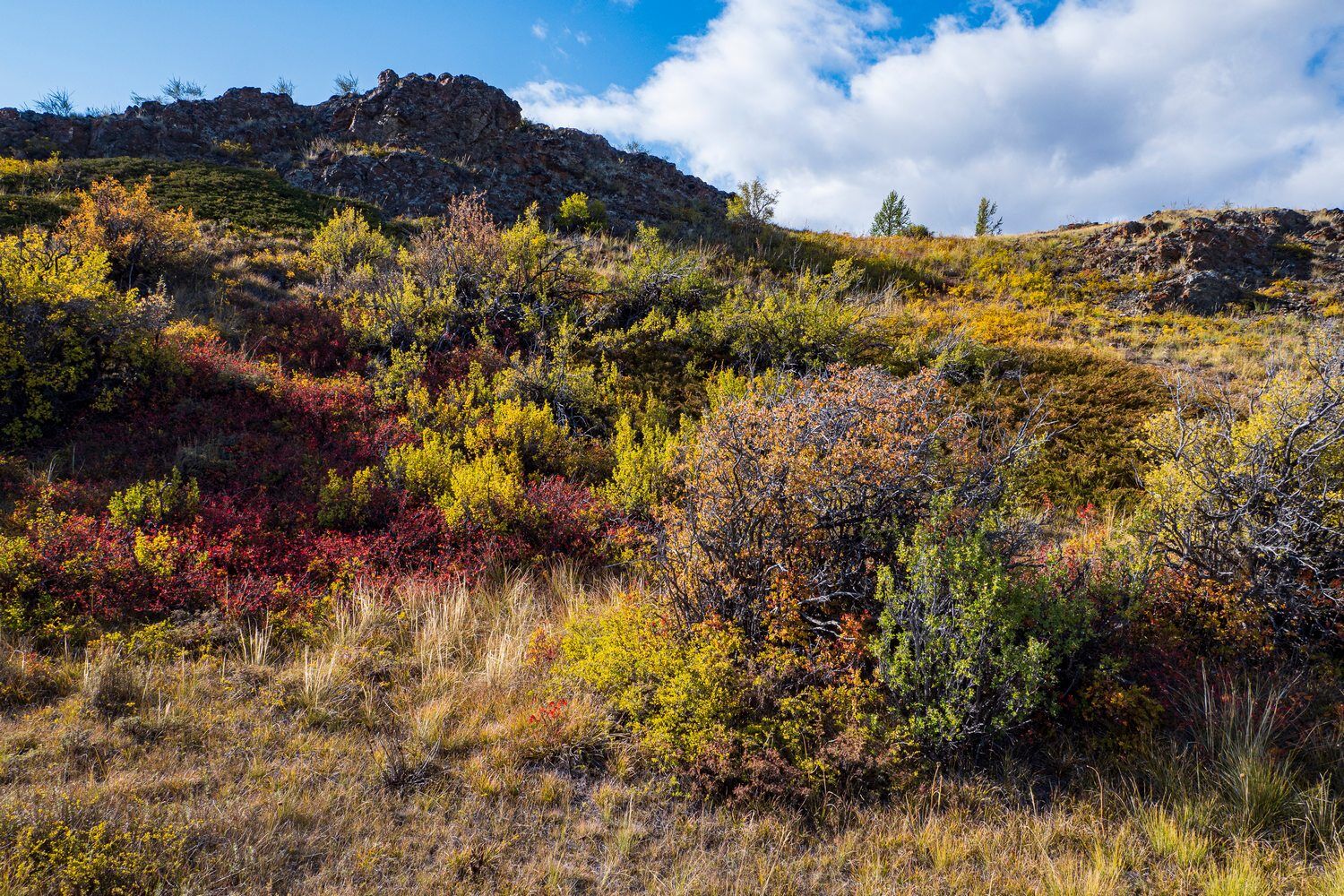
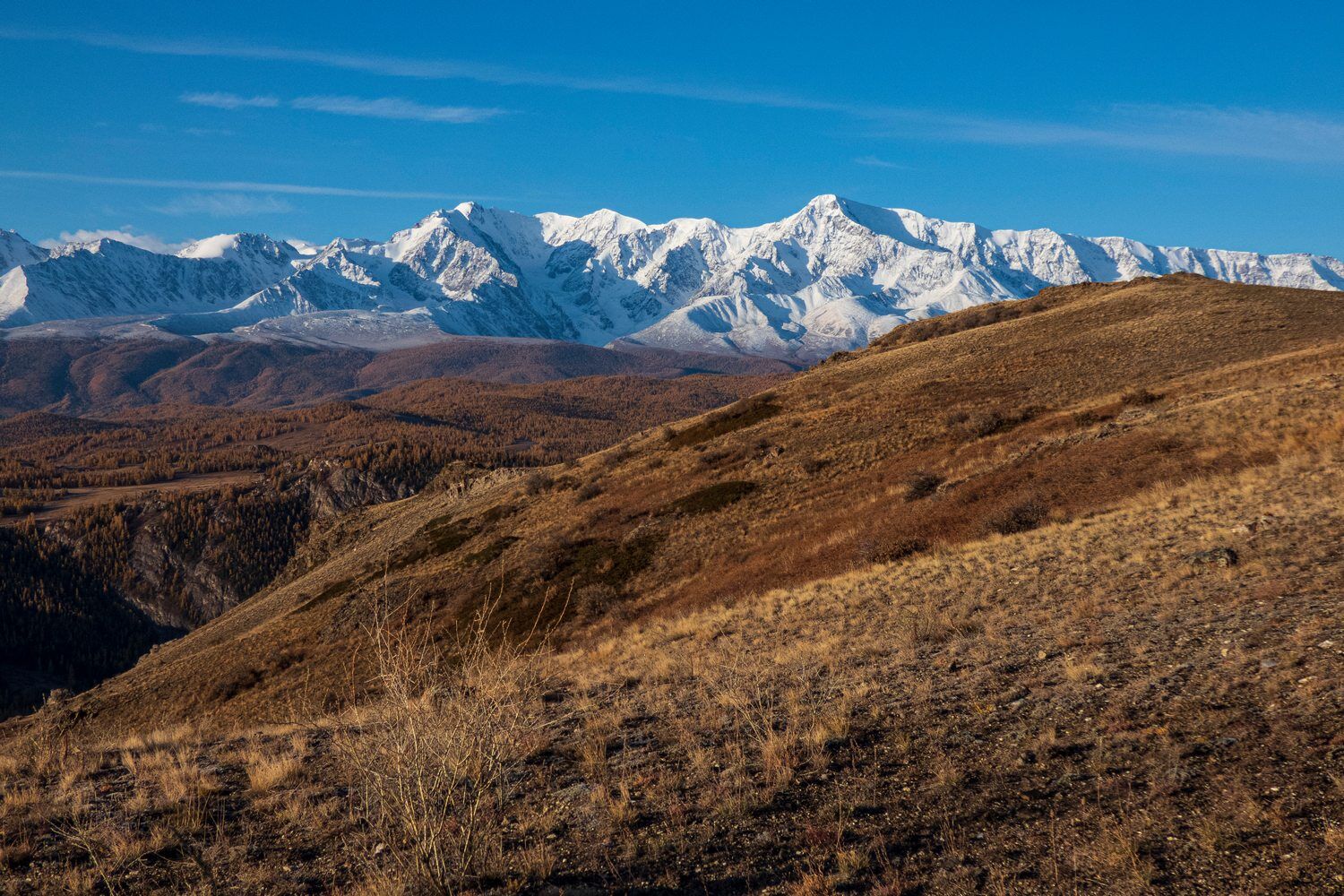
The fauna of the steppe is very diverse. Gophers, field mice, pika’s, steppe ferrets and hares live in the steppe, and you can find the steppe fox or corsac and even the wolf. Demoiselle cranes and (black) storks settle along the banks of the rivers.
Despite the harsh climatic conditions, the Kurai steppe has been home to many people for many centuries. Even now, you can find here archaeological sites of different cultures – mounds, ancient irrigation systems, balbals and groups of rock carvings. Until 1972, a symbol of Turkic culture – a stone sculpture of the warrior “keser”, 1.6 meters high, was standing in the steppe. In 1972, it was transferred to the Museum of Local Lore of Gorno-Altaysk, where it can be seen today. In 2019 the copy of this monument was erected in the Kurai steppe.

For centuries people lived in the Kurai steppe in a nomadic way. The first settlement belongs to the 19th century, when the Administration of the 2nd Chuya volost was established. It consisted of one yurt and a house in which a coachman and a clerk lived. It was supposed to make a village for peasants from the European part of Russia here, but due to the lack of a road, this idea was not successful for quite some time. In 1903 the Russian Orthodox church which had come as missionary, built a church in this area. The population of the steppe continued to lead a nomadic way of life and did not tend to settle down.
Only after installation of Soviet power, in 1926 the construction of a small village started. Later the school, the post-office and the hospital were opened. The village began to grow, and in 1930 a cattle-breeding kolkhoz was established. Young Soviet power had very ambitious ideas to turn the dry steppe to green fields. A complicated irrigation system was built in the steppe. In 1930-1940-s a lot of experiments to grow wheat, oats, barley and vegetables were set up. Some of them were successful and harvests of grains were collected. But nature conditions were too severe and since 1950-s crop farming turned only to growing coarse grain for feeding cattle. Breeding of sheep, goats and cows became the main activity of the kolkhoz.
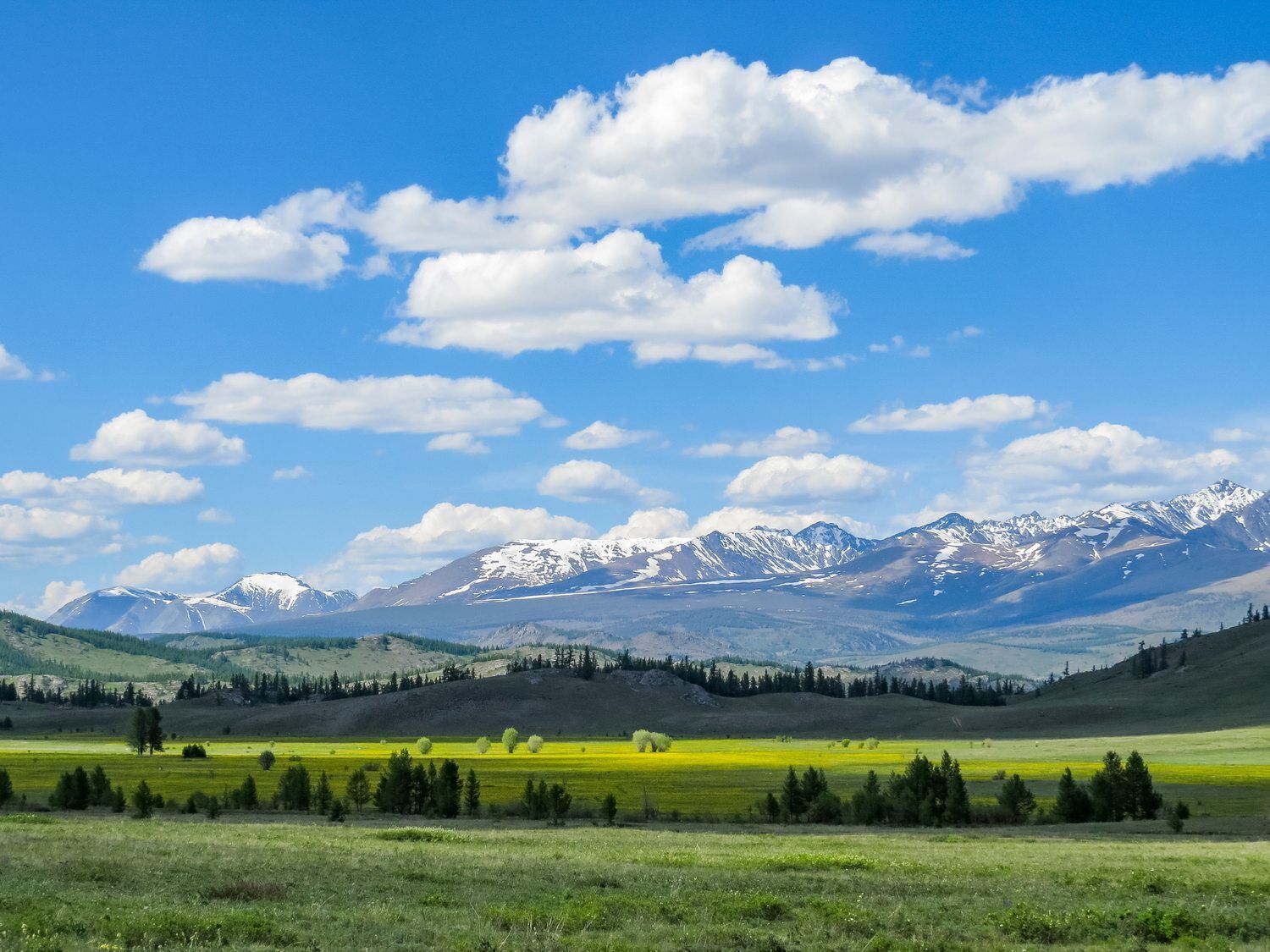
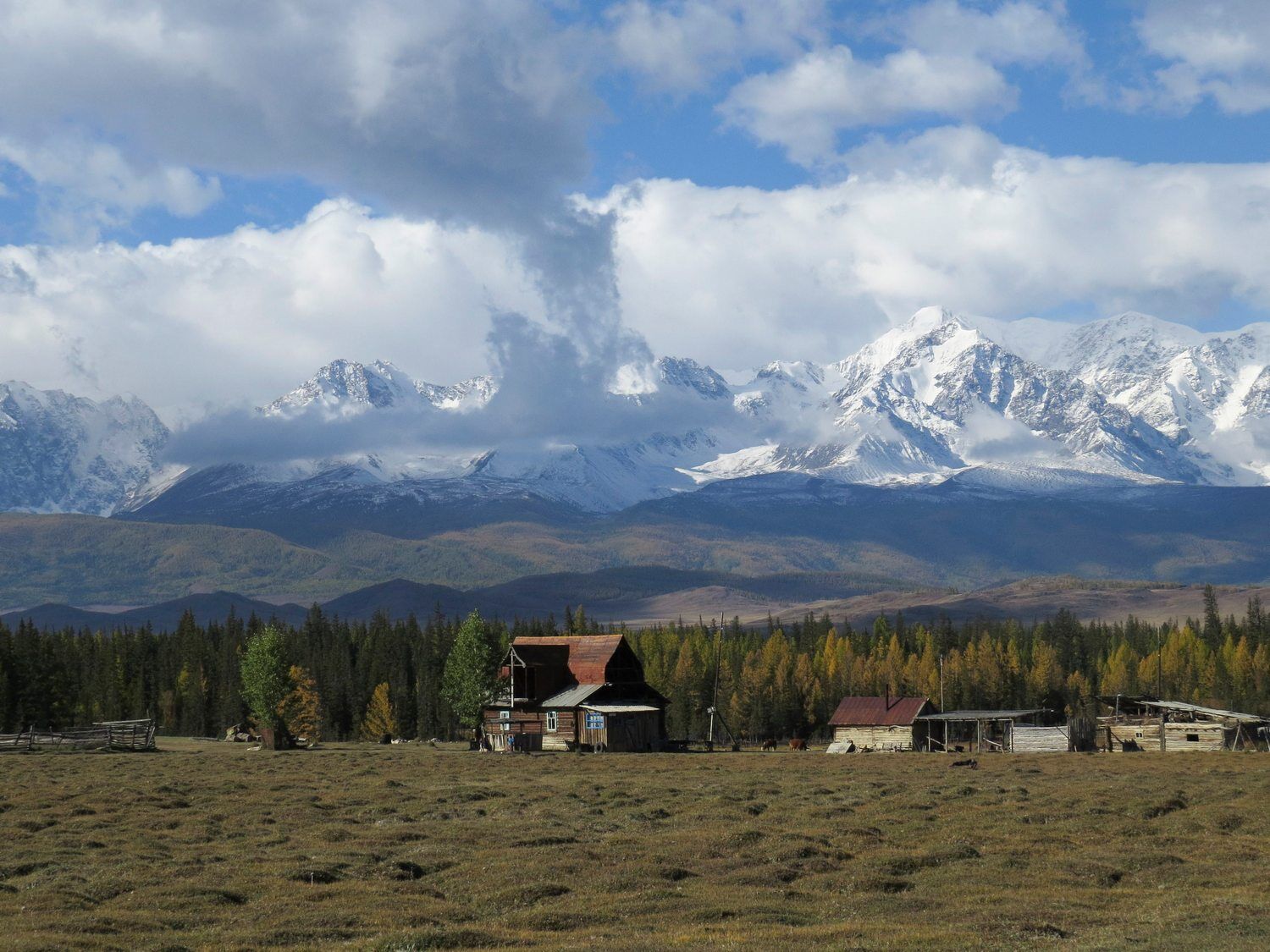
Besides agriculture, there was a basecamp of geological exploration expeditions in Kurai . Geologists were researching surrounding mountains looking for mineral deposits. Although they found a lot of different minerals, it turned out that the costs to get them would be too high.
Today, two villages are located in the Kurai steppe – Kurai and Kyzyl-Tash.
In the Kurai steppe, you can see a unique geological formation – one of the most spectacular relief fields of giant current ripples in the world. These are the same ripples that you can see on the sand banks of rivers or seas, only much bigger. In the Kurai steppe the height of the sand dunes in some places reaches 20 meters with a length of 200 meters. These huge ripples were formed, according to scientists, about 15 thousand years ago during the catastrophic breakthrough of the Chuya-Kurai ice-dammed lakes. According to the official register of the American Geology Service, water flows which formed the dunes in Kurai were the strongest in the world, the peak discharge of water was about 18 million cubic meters per second. The best view to the giant current ripples is from the air. But it is possible to observe them from some hills in the steppe.

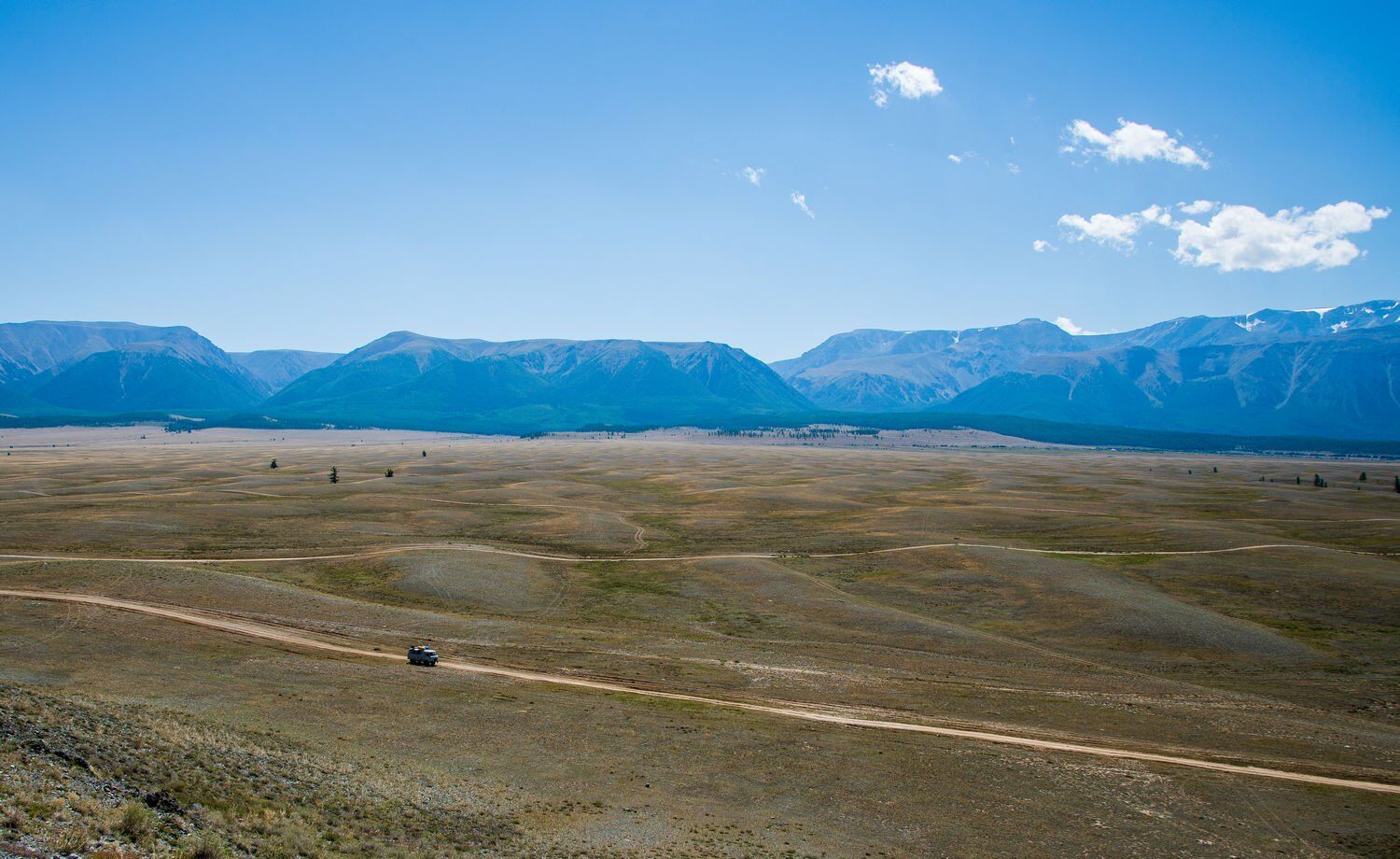
The main attraction of the Kurai steppe is, of course, a stunning view of the North Chuya Range. The mountains come as close to the road as possible and in fine weather, high snow-covered peaks and mighty glaciers are perfectly visible.
A lot of active touristic and alpinists’ routes start from the Kurai steppe. You can even get close to the glaciers in the Aktru valley by 4WD car.
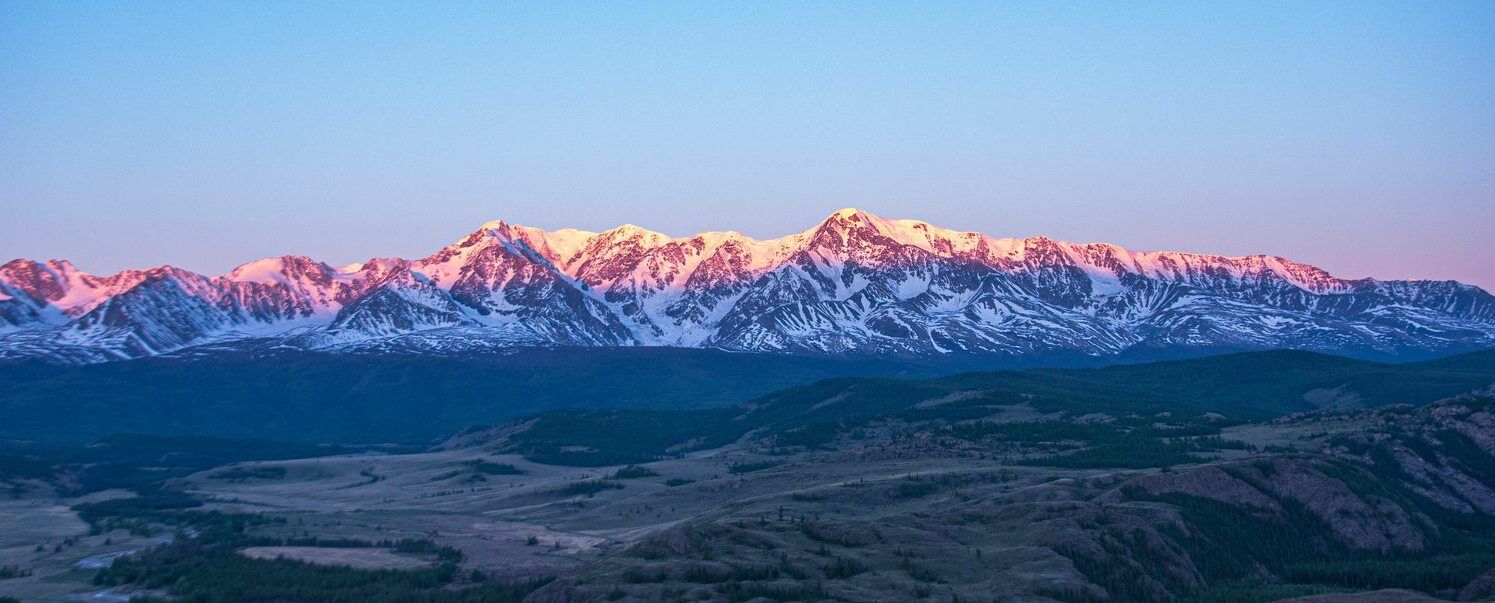
Kaichi Travel
Adventure travel, nature tours to Altai – one of the most beautiful places in Siberia.
© 2020 by Kaichi Travel Privacy Policy Cookie Policy Booking Terms & Conditions
Info
Our tours
Follow us
tel.: +31 645466537
e-mail: [email protected]
